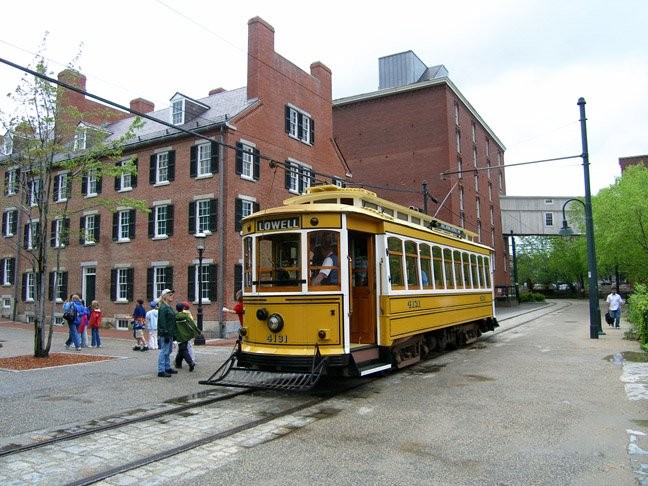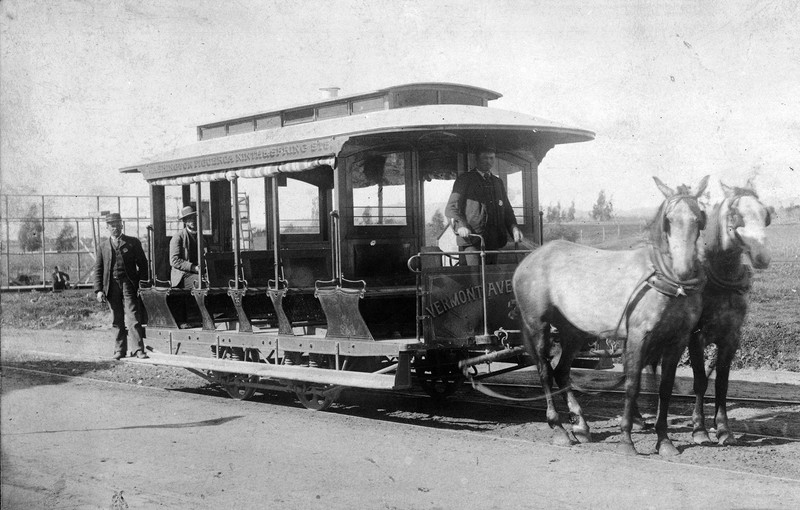National Streetcar Museum
Introduction
Text-to-speech Audio
Images
The National Trolley Museum's New Orleans 966 car (image from the National Park Service)

National Trolley Museum in Lowell (image from Railway Preservation online)

A Los Angeles example of a horse-drawn omnibus trolley (image from KCET Media)

Backstory and Context
Text-to-speech Audio
In 1903, the all-male, mainly Irish streetcar workers of Lowell joined the Amalgamated Association of Streetcar Employees to form a union. After strikes by workers and complaints from the public, Lowell's streetcar lines were bought by the Lynn & Boston Railroad Company (renamed the Boston & Northern Street Railway Company), with Patrick F. Sullivan of Lowell in charge. The company merged again with the Bay State Street Railway Company, but the latter went bankrupt in 1918. Streetcar railways declined in the 1920s throughout New England, and Lowell's turn-of-the-century electric trolleys ran for the last time in 1935 (3).
History of the
National Streetcar Museum
During an economic decline in the
1970s, the city of Lowell partnered with the National Park Service to plan an
industrial heritage park to generate tourism (see Lowell National Historical Park
and American Textile History Museum.) As trolley lines were an important
component of Lowell's textile industry, it was decided to use replica streetcars
to transport visitors between locations and provide tours within Lowell
National Historical Park. The cars were constructed by the Iowa company of
Gomaco. The Seashore Trolley Museum of Kennebunkport, Maine, helped to
guarantee the accuracy of the replicas, which began operation in 1984. The
museum also partnered with Lowell in 1998 with plans to expand the lines, add
more trolleys, and create a permanent exhibit space. Unfortunately, the first
two components of this concept were determined not feasible after a
sixteen-year study; however, the indoor museum became a reality, and features the
"On Track" exhibit (1; 2).
History of the Streetcars
Lowell National Historical Park operates three replica J.G. Brill Company trolleys, two New England "breezer" (open air) streetcars and one "semi-convertible" (all weather) car (2). These were the "first accurate replica trolleys built in the United States," (3). As part of the partnership between Lowell National Historical Park and the Seashore Trolley Museum, Lowell also operates the restored, original New Orleans No. 966 streetcar. The 966 was built in 1924 by Perley-Thomas, and ran in the French Quarter, where Tennessee Williams was inspired to write his famous play, "A Streetcar Named Desire," (1; 2 ; 3).
